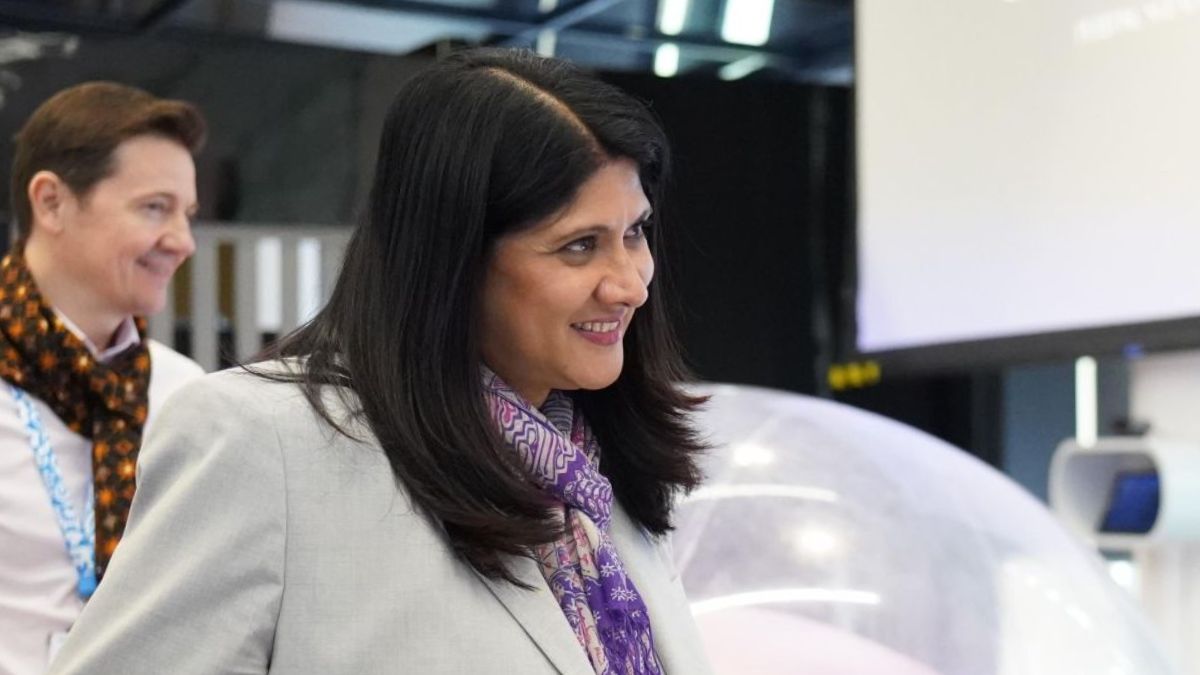EXPLAINER: Why are investors, analysts backing Priya Nair’s appointment as new CEO of Hindustan Unilever?
 Priya Nair at a Unilever Beauty & Wellbeing event in May 2025 [File] | LinkedIn
Priya Nair at a Unilever Beauty & Wellbeing event in May 2025 [File] | LinkedIn
Hindustan Unilever’s shares have vastly underperformed the broader markets over the past two years. But, on Friday, the stock surged 5 per cent, even as the benchmark Sensex and Nifty traded lower, as investors gave a big thumbs up to the company’s appointment of Priya Nair as its new MD and chief executive from August 1.
Nair has been with HUL since 1995 and held several sales and marketing positions across home care, beauty and wellbeing and personal care businesses, going on to become the global chief marketing officer, beauty and wellbeing at parent Unilever. Since 2023, Nair has been president, beauty and wellbeing, which is among Unilever’s fastest-growing businesses.
She was the executive director (ED) of home care between 2014 and 2020 and the ED of beauty and personal care at HUL from 2020 to 2022, before she was moved to Unilever.
Analysts have largely welcomed her appointment. Mihir Shah of Nomura pointed to her versatile experience across key categories and a deep understanding of the Indian market.
The beauty and wellness space has seen rapid growth in the country in the last few years, with the entry of several new players from Mamaearth to Sugar Cosmetics and the emergence of dedicated e-commerce platforms like Nykaa. Established homegrown as well as multi-national players have introduced new products and brands, especially in the premium space, with shifting demand preferences among the country’s growing young population.
In this backdrop, Nair’s appointment as the chief executive could be a big advantage for HUL. Shah pointed out that as ED, beauty and wellbeing, she has been instrumental in driving the shift from value to premium by driving 26 per cent of HUL’s portfolio focus towards premium demand spaces, versus 20 per cent in 2020.
Furthermore, during her stint in the home care business, the segment’s EBIT (earnings before interest and taxes) margins significantly improved to 18.8 per cent in the 2019-2020 financial year from 13.1 per cent in 2013-14, stated Shah. This increase consequently helped HUL’s overall EBIT margins rise sharply to 22.3 per cent from 15 per cent.
“The change of guard will provide HUL with the required boost versus peers to navigate competitive challenges, accelerate its digital transformation efforts and capitalise on the evolving and long-term prospects of the Indian consumption market,” said Shah.
Analysts say HUL will be one of the major beneficiaries of the rising disposable and per capita income in the country.
“Current per capita FMCG spend in India is $49, significantly lower than countries like Thailand, Philippines, China and Indonesia. HUL is well positioned to exploit this under indexation with the rise in the disposable income in the country, by driving premiumisation across portfolios and catering to diverse consumer segments,” pointed out analysts at Ashika Global Family Office Services.
HUL has made several acquisitions over the last few years, focusing on driving market share growth in existing segments and entry into newer segments. So, it acquired the nutritional drinks portfolio (Horlicks and Boost) of GlaxoSmithKline Consumer Healthcare in 2020, and followed it up by buying a majority stake in the maker of the plant-based supplements brand Oziva in 2022. In January this year, it snapped up direct-to-consumer beauty brand Minimalist.
But not all acquisitions have gone as planned. For instance, the company has seen revenue decline in the nutritional drinks space, with the key issue being that the category consumption is not growing. Last quarter, HUL also saw volume declines in the foods space. To boost the nutritional drinks portfolio, some unique ideas may be needed.
All eyes will now be on the growth going ahead. Nair is taking charge at a time when consumer goods companies have been battling headwinds from sluggish urban consumer demand. That is expected to improve in coming quarters, aided by RBI’s interest rate cuts, the income tax relief announced in the Budget and the salary increases for government employees post the implementation of the 8th pay commission. A good monsoon is expected to further lift rural demand, which has been as such growing ahead of urban.
In the previous financial year ended March 2025, the company’s sales volumes grew just 2 per cent. The company may need to bring in global brands to boost market share amid the premiumisation push as well as to take on the new-age startups, while also taking steps to protect market share in areas like tea and soaps, which already have a high penetration.
Analysts at Citi have pointed out that Nair comes with a strong track record, and they will watch out for any strategy refresh after a period of relatively tough performance.
The change of guard at HUL comes just months after its parent Unilever announced Heinz Schumacher was stepping down as CEO effective March 1, 2025. He was replaced by Fernando Fernandez, the company’s CFO at the time. Before he became the CFO, Fernando also had a successful tenure as president of the beauty and wellbeing business. The appointment of Nair is then perhaps a clear indication that the company may be looking to double down on this business, considering it’s been among the fastest growing, and competition has been fierce.
Business